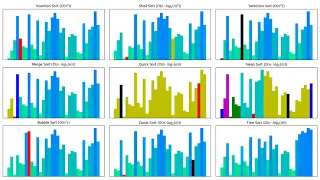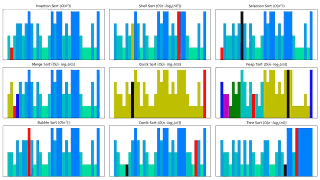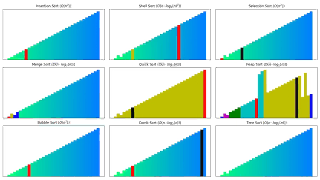Algorithm Three Sort is a hybrid sorting algorithm developed by Oscar Riveros, designed to optimize performance across various data sizes and scenarios. It combines the strengths of Quicksort, known for its average-case efficiency, with Insertion Sort, which excels on small datasets due to excellent cache locality.
-
Quicksort:
- Pivot Selection: Uses a median-of-three method to choose a pivot, enhancing stability.
- Partitioning: Rearranges elements around the pivot, creating subarrays that are recursively sorted.
-
Insertion Sort:
- Applied on small subarrays determined by a threshold based on log2(mid) + 1, ensuring optimal performance on small datasets.
- Initial Check: If the array segment is too small, Insertion Sort is used.
- Pivot Selection: Chooses the median of three elements to reduce worst-case scenarios.
- Partitioning: Elements are rearranged around the pivot, minimizing swaps and improving cache efficiency.
- Recursive Sorting: Quicksort is applied recursively on subarrays until all segments meet the small size threshold.
- Average Case: O(n log n) due to efficient partitioning in Quicksort.
- Worst Case: O(n^2), though mitigated by median-of-three pivot selection and hybrid approach.
- Best Case: O(n log n), achieved with balanced partitions.
- Recursive Calls: O(log n) for the recursion stack, efficient for typical use cases.
The Python implementation integrates both sorting methods:
import math
def insertion_sort(lst, left, right):
for i in range(left + 1, right + 1):
key = lst[i]
j = i - 1
while j >= left and lst[j] > key:
lst[j + 1] = lst[j]
j -= 1
lst[j + 1] = key
def tree_sort(lst, left, right):
if left >= right:
return
mid = (left + right) // 2
if mid != 0 and right - left + 1 <= math.log2(mid) + 1:
insertion_sort(lst, left, right)
return
# Median-of-three pivot selection
pivot = lst[mid]
# Swap pivot to end for partitioning
lst[mid], lst[right] = lst[right], lst[mid]
i, j = left - 1, right
while True:
i += 1
while lst[i] < pivot:
i += 1
j -= 1
while lst[j] > pivot:
j -= 1
if i >= j:
break
lst[i], lst[j] = lst[j], lst[i]
# Swap pivot back to its correct position
lst[right], lst[i] = lst[i], lst[right]
tree_sort(lst, left, i - 1)
tree_sort(lst, i + 1, right)lst = [3, 6, 8, 10, 1, 2, 1]
tree_sort(lst, 0, len(lst) - 1)
print(lst) # Output: [1, 1, 2, 3, 6, 8, 10]Algorithm Thee Sort excels in scenarios requiring efficient sorting with a hybrid approach. Its optimal use of Quicksort for larger datasets and Insertion Sort for small segments ensures good average performance while mitigating worst-case risks. Ideal for real-world applications where data size and stability are critical.


